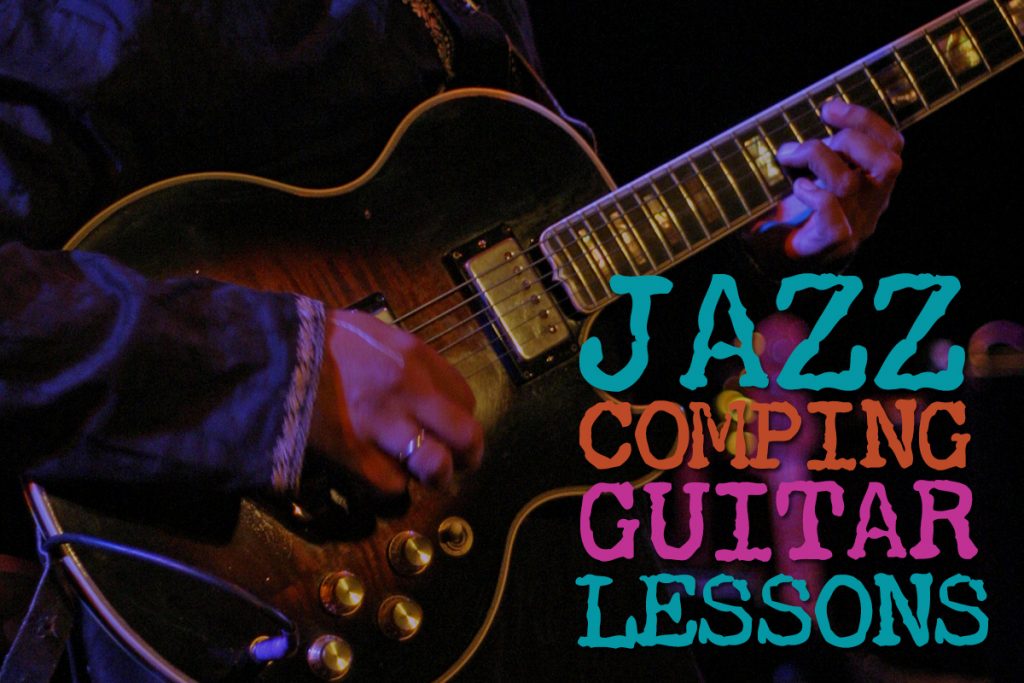Fareed Haque’s Jazz Comping Survival Guide is based on a very simple, yet far-reaching concept; building chords from the inside out. Your tutelage begins with basic guide tones and an intuitive system for building your chord vocabulary, chord substitution and more.
In this series of lessons, guitar virtuoso and master educator Fareed Haque gets you started with these hands-on, playing lessons. Jump on board!
Too Many Big Chords
Check out more info about this jazz guitar lesson here.
Guide Tones
Download the tab and notation for this jazz guitar lesson.
Fareed’s 1st Principle of Chord Substitution
Check out more info about this jazz guitar lesson here.
Fareed’s 4th Principle of Chord Substitution
Feel free to mix and match these principles. Any chord can become a dominant, any dominant can become a ii-V, add in a tri-tone sub. So one could have G7 going to C become Db7 going to C (tri-tone sub) and then add Abm-Db7 (any dominant can become a ii-V) to C.
Tritone Subs
Download the tab and notation for this jazz guitar lesson.
A blues played using tritone subs to lead to each chord in the blues.
Slipping & Sliding
Don’t be shy! The simplest way to add spice to a jazz arrangement is to slide, slide, slide. Experiment with this: Approach every chord from above or below by 1 fret and just see what happens, or try sliding in from 2, 3, 4 even 5 frets (how daring!)
Putting it All Together
Download the tab and notation for this jazz guitar lesson.
Here’s an example with drums and bass. Listen to how I am following the snare drum and cymbal hits.
Adding One Extension
Download the tab and notation for this jazz guitar lesson.
A blues using guide tones plus one extension.
Locking in with the Drummer
In almost all styles of music guitar must lock in with drums. Often with the cymbals of hi-hat. Learn to love and listen to drums for your comping ideas.
Horn Section Backgrounds
Use simple melody line harmonized with guide tones and 2 extensions to create sax section sound.
Comping for Yourself
One of the nicest things about the guide tone approach to comping is the way it allows you to comp for yourself. The simplest way to conceptualize comping is to solo as normal, and to use guite tones to punctuate the spaces, or to put it another way – try to have a question and answer with color tones and your melody. Play a line, then interject a ‘comment’ using the color tones, then back to line. Another approach is to hold a melodic voice with one finger while sneaking in the guide tones, also can we mute the mic, it’s distorting and sound is too bright – nasty!
The I-vi-ii-V Progression
Download the tab and notation for this jazz guitar lesson.
A short playing example of the I-vi-ii-V + 2 extensions.
After you’ve worked through these lessons, you’ll be ready to tackle the full shebang of roughly four and half hours of interactive mind-meld with one of the most prolific, inventive, erudite and switched-on guitarists on the planet. Take the plunge…
